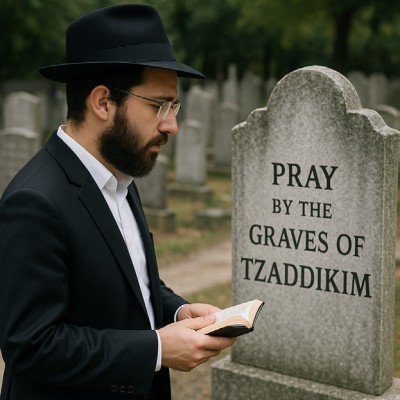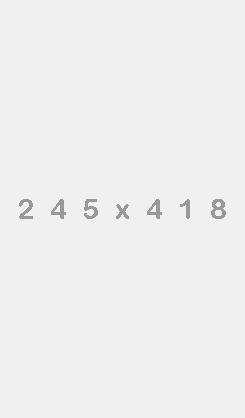
I. INTRODUCTION
Cemeteries, places where many loved ones are laid to rest, offer a sanctuary for many to visit and find comfort. While some come to pay their respects to personal relatives, others seek to pray by the graves of tzaddikim.
While cemeteries are often associated with impurity (due to certain forces that are drawn to the cemeteries1), there remains a set of respectful guidelines to be observed by those who visit, particularly at the graves of tzaddikim.
Three key restrictions govern behavior in cemeteries and near graves of tzaddikim that are alone graves (outside the cemetery): (1) avoiding mockery of the deceased (lo'eg la'rash), (2) refraining from frivolity (kalut rosh), and (3) abstaining from personal benefit from the graves.2
II. MOCKERY OF THE DECEASED (LOEG LA’RASH)
King Solomon (Mishlei 17:5) declares that "He who mocks a poor man blasphemes his Maker." This pasuk teaches the principle of lo'eg larash, which prohibits certain actions that denigrate the deceased. These actions primarily revolve around highlighting their lack of ability to fulfill mitzvot by performing them in their presence.
The Gemara3 cites a Beraita to illustrate: Within four amot (cubits) of a deceased, it's forbidden to wear tefillin, study Torah, or say Shema. These acts disrespect the deceased, violating lo'eg larash.
A. The nature of the prohibition
Some explain that mocking the deceased is forbidden because it disrespects their inability to fulfill mitzvot. Witnessing others perform mitzvot, which they are eternally unable to fulfill can be seen as a painful reminder of their limitations and a form of humiliation.4
Unlike the Babylonian Talmud, the Talmud Yerushalmi5 doesn't forbid saying Shema in cemeteries because of disrespecting the dead. Instead, it focuses on the impurity of graveyards.6
B. Where
Despite the Beraita cited prohibition of prayer and studying Torah near a grave (Berachot 18a), the rabbis seemingly violated this rule by setting up a yeshiva at King Chizkiyah's graveside after his death (Divrei HaYamim II 32:33). Tosafot (Bava Kamma 16b) reconciles this discrepancy by suggesting that the rabbis maintained a distance of at least four amot from the grave to comply with the law.
Based on the Tosafot, the Shulchan Aruch7 outlines that once one moves four amot (approximately six feet) away from a grave, it is permissible to engage in activities like learning or prayer. However, it is permissible to recite pesukim and drashot in honor of the deceased within his four amot, or on the cemetery.8
Some poskim9 rule that the area within four amot of a cemetery, even if it is separated by a fence, is forbidden. However, according to Maran, within four amot is permitted as long as a wall or a fence separates you from the cemetery itself. Given the common practice of constructing a mechitza (separation wall) around a tzaddik's grave, this practice enables prayer within four amot, as the mechitza establishes a distinct domain.
C. Tefillin and Tzitzit in the Cemetery
The Bet Yosef,10 explains that unlike head tefillin (tefillin shel rosh), which are visible, the teffilin on the arm are hidden under the sleeve and therefore not considered disrespectful to the deceased. Thus, one may enter a cemetery with covered hand tefflin11 or tucked in tzitzit.
D. Kadish, Divrei Torah, Prayer
According to the Shulchan Aruch,12 when in the presence of a deceased, speech should be limited to matters directly related to the deceased, such as the needs of their burial or the eulogy. Any other conversation, including Divrei Torah (words of Torah), is prohibited. Secular matters, however, are generally permitted.
The Nimukei Yosef (Bava Kamma 16b) cites the Ramah, permitting Torah or Tehillim recited in the honor of the deceased13 —even within four amot. The Bet Yosef (Y.D 344) cites the Mahari Abohav that rules like the Nimukei Yosef, and that is the final halacha in the Shulchan Aruch.14 Thus, learning Torah or reciting Tehillim in a cemetery or within four amot of a deceased person or grave is generally prohibited, unless it is done for the deceased's honor.15
The kabbalistic work Ma'avar Yabok (written by Rav Aharon Berachia of Modina -17th Century Italy) explains16 that reciting kaddish that elevates the soul of a deceased individual is permissible, as this action is considered an act of honoring the deceased. Rav Yaakov Chayim Sofer (1870–1939) in Kaf HaChayim (O.C 23:1) and the Minchat Elazar (3:53) concur.17
Rav Ben Tzion Mutzafi18 reports that his saintly father Rav Salman Mutzafi (who was a student of the Rav Yehudah Fetaya) states that one should take care to explicitly specify that these actions are done for the honor of the tzaddik and all the deceased in the vicinity. This is also the ruling of Rav Ovadia Yosef,19 who compounds the opinion of Rav Naphtali Tzvi Yehuda Berlin (the Netziv), in his Ha’amek She’ela (14:6), who proposes that since modern burials place the deceased more than 10 tefachim (around 3 feet) below ground, the prohibition of lo'eg larash (mocking the poor) does not apply.
However, for prayers like Shacharit, Mincha, or Arvit, or for the recitation of the Shema, which are not performed in honor of the deceased, praying within four amot of the deceased or their grave is not permitted.
1 Since cemeteries are believed to be inhabited by evil spirits (souls of individuals who violated karet and are therefore confined to kaf hakela, unable to reach their destined resting place in Heaven) and mazikim (the remnants of zera levatala that linger on the graves and roam the cemetery grounds). The mazikim are particularly drawn to those who have not yet rectified this specific sin within themselves (Sha'ar Hayichudim ch. 4). Among non-Jews, death is seen as the end of existence. But in our tradition, the soul continues beyond the body’s demise. There are multiple proofs for this, one of them being reports of anomalies in Tesla car sensors that detect “people” in cemeteries where no one is visibly present.
2 Laws and Customs of Mourning (Goldstein) vol. 2 ch. 31, pg. 330
3 Berachot 18a
4 Ritba, Berachot 18a
5 Berachot 2:3
6 See Smag, mitzvot asei, 18, 22,
7 Y.D 367:6
כיון שהרחיק ד' אמות קורא ומתפלל ואפילו רואה הקבר או בית הקברות ואם יש שם מחיצה מותר אחר המחיצה סמוך אפילו תוך ד' אמות לקבר
8 Y.D 344:17
מותר לומר פסוקים ודרשה לכבוד המת בתוך ארבע אמותיו או בבית הקברות (מהרא"י בביאור מא"ח לדעת רמ"ה)
9 Magen Avraham O.C 45:1
ואפי' תוך של ביה"ק אסור וכ"ה בי"ד סי' רפ"ב ס"ד ושס"ז ס"ג ושע"ו ס"ד ולזה נתכוון הב"י בסי' כ"ג וכ"ה כוונת הגמרא כנ"ל
10 O.C Siman 23
11 Shulchan Aruch, O.C 45:1, Y.D 367:2
The Taz (O.C 45:2) and the Mishna Berura (45:3) rule that one must conceal not only tefillin shel yad but also the finger straps worn on the fingers. This is because they serve as a visible indicator of the concealed tefillin beneath the sleeve.
12 Y.D 344:16
אין אומרים בפני המת אלא דברים של מת כגון צרכי קבורתו והספד אבל שאר כל דבר אסור והני מילי בדברי תורה אבל במילי דעלמא לית לן בה
13 The Chida (Birkei Yosef, Yoreh De’ah 344:7) explains that honoring the deceased refers specifically to actions that contribute to the elevation of the soul of the departed. Therefore, any prayer, recitation of Tehillim, or words of Torah that are explicitly intended for the merit and spiritual benefit of the deceased are permitted, even within four amot of a grave.
14 Y.D 344:17
מותר לומר פסוקים ודרשה לכבוד המת בתוך ארבע אמותיו או בבית הקברות (מהרא"י בביאור מא"ח לדעת רמ"ה)
15 Y.D 367:3
לא יהלך בבית הקברות או בתוך ד' אמות של מת או של קבר וספר תורה בזרועו ויקרא בו או יתפלל והוא הדין על פה אסור לקרות אלא אם כן לכבוד המת כמו שנתבאר (וע"ל סימן שד"מ סעיף ט"ז)
16 ספר מעבר יבק ,שפת אמת, פרק כט
אומרים הקדיש, שסגולתו בכל מקום לתברא מנעולין -. דפרזלא [לשבר מנעולי הברזל], לפתוח השמים והשערים, ולשמור התפילה או מן הקריאה וכל שאר הענינים המקטרגים ומתנכרים בו, ואין להם כח לקנתר ולקטרג וכו'. וקדיש זה הוא דבריו של מת שהם מתפללים עליהם, ואין צריך להרחיק ארבע אמות וכו', וכבר נודע כי סגולת הקדיש לבטל אשו של גהינם, ולהכניע כוחות הזרים. והבן בכח הקדיש מוציא אביו מיד החיצונים ומכניסו לגן עדן
17 See also Shu”t Yechave Da’at (6:5), Shu”t Yabia Omer (Y.D 4:29:4, 33:2) and Halacha Berurah Vol.4 Birur Halacha pg. 130-131
18 Shu”t Mevaseret Tzion vol.4 pg. 276
והמקובל רבנו יצחק אלפייה ז"ל בקונטרס היחיאלי [בית עולמים, פרק טו סימן כב, דנ"ד ע"א] כתב: "כשלומדים בבית הקברות, צריך לומר: "עבור נשמת כל מתי עמו ישראל, ובפרט הקבורים פה", בכדי שלא לעבור משום "לועג לרש", דהרי לכבוד כולם הוא לומד, וגם הם יש להם נחת רוח, ומשתעשעים בלימוד". וכן מור אבי זלה"ה היה נזהר בהשתטחו על קבר צדיק בפני עצמו, לומר בפיו "ועל ידי דברי תורה אלו, תמשך נחת רוח להצדיק הקבור פה". וכשהיה הקבר בבית־החיים ומסביב ישנם קברים נוספים, כמו בבית החיים בהר הזיתים בירושלים, בצפת או טבריה, היה מוסיף ואומר: "ועל ידי לימוד תורתנו תמשך נחת רוח לכל הצדיקים והנפטרים הקבורים פה", וכנזכר בספרו שפתי צדיקים [מבוא, עמוד 16, ובמהדורה חדשה עמוד 20]. וכן שמעתי מפי מורנו הגאון רבי בן ציון אבא שאול ז"ל
19 Chazon Ovadia - Avelut vol. 3 pg. 211
Respect & Reverence In The Cemetery
Typography
- Smaller Small Medium Big Bigger
- Default Helvetica Segoe Georgia Times
- Reading Mode




